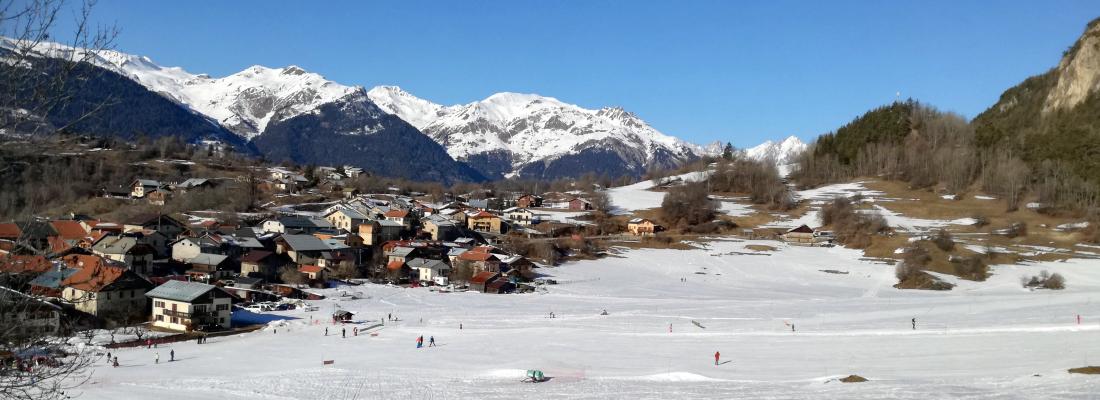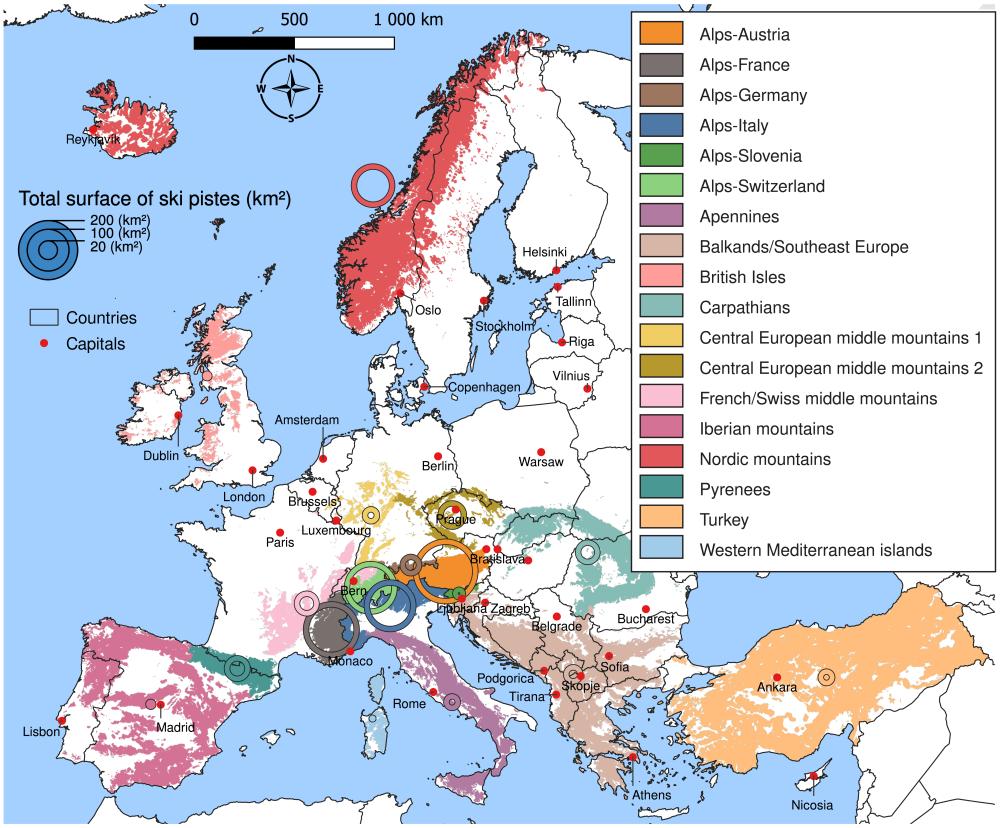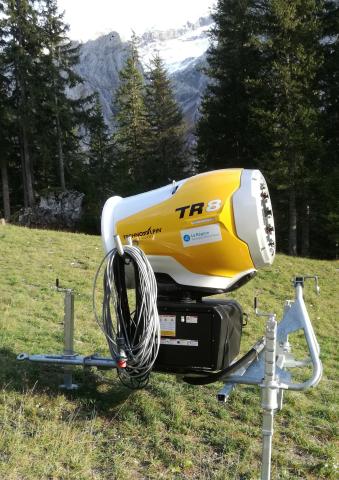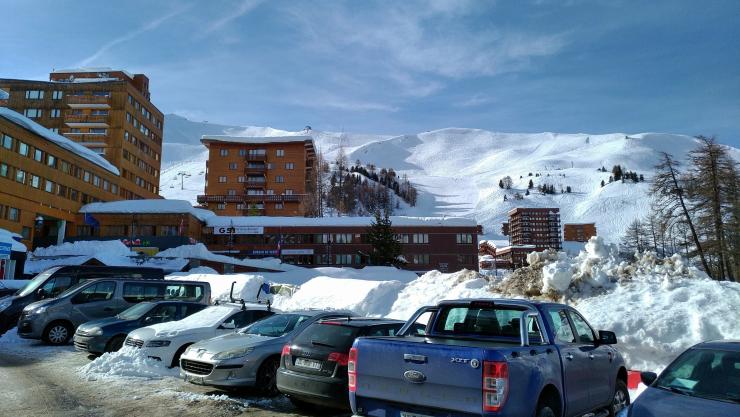Climate change and risks Reading time 6 min
Will we be able to ski in a +2°C world?
Published on 19 December 2023

Over the last months, the raison d’être of winter sports has been threatened more than ever by a range of challenges and controversies. From the occupation by activists of the glacier of Girose, Southeastern France, to protest against plans for a new cable car, to doubts over whether to hold pre-season sporting events following the partial destruction of the Théodule glacier in Switzerland, scarce snow is pitting people against one another. Behind all these tensions lies the same question: what does the future hold for skiing on an overheating planet? In recent decades, France has seen some ski resorts close due to a lack of snow or a sustainable business model. However, the majority of resorts continue to cling on to the hope of adapting to rising temperatures. But will reproducing the tried and tested recipes of the past be enough to meet the climate challenges ahead?
Published in Nature Climate Change, our study of 2,234 winter sports resorts in Europe sought to measure the impact of global warming on snowmaking in resorts, and the possible room for manoeuvre available to adapt.

This question is not just a concern for amateur or professional skiers. Skiing is also an economic issue, with a total turnover estimated at 30 billion euros in Europe. In France alone, 120,000 jobs depend directly and indirectly on the ski economy.
53% of ski resorts are at risk of running out of snow at +2°C
Climate change is a global phenomenon impacting resorts worldwide, but not all mountain areas are affected to the same degree or with the same speed, and the ability to limit the impact of these changes through snow production also varies greatly. We have measured the impact of climate change on winter sports resorts based on the level of global warming, using the graphical representation, commonly used in IPCC reports, of “burning embers”.
At 2°C of global warming above pre-industrial levels, 53% of European resorts are at very high risk of low snowfall. We assess the risk of low snowfall on the basis of the frequency of snow conditions considered to be the most unfavourable, those encountered on average one season in five between 1961 and 1990, the golden age of resort development. However, the picture varies at a national level: in the French Alps, this proportion concerns a third of resorts, while in the Pyrenees and in the Franco-Swiss mid-mountain massifs, 89% and 80% respectively of resorts are affected by a very high level of risk of low snowfall. At 4°C of global warming, 98% of European resorts are at very high risk of low snowfall. With this level of warming, the climate leaves winter sports resorts little margin for adaptation.
Changes in the use of snow production

One of the most popular solutions to adapt to scarcer snow is snowmaking, also known as “artificial snow”. Snow production involves projecting micro-droplets of water into the atmosphere so that they freeze before falling back to the ground. The resulting snow, made up of small balls of ice, is a suitable material for making an underlay.
In the past, snow was produced mainly to limit the impact of natural fluctuations in snow cover from one season to the next. Snow is now mainly produced in the pre-season, without any knowledge of the weather conditions for the coming winter, and then on a more ad hoc basis if necessary between the Christmas and winter holidays.
Snow production also affected by rising temperatures
Like natural snow, snow production is affected by rising temperatures, because snow production requires sufficiently cold weather conditions. This dual pressure is leading to increased investment to ensure that sufficient snow can be produced, thereby increasing the dependency of mountain resorts on snow tourism.
Not all ski resorts will equally be able to adapt to rising temperatures by producing snow. At +2°C global warming, snowmaking, if applied to 50% of the ski area, would reduce the proportion of resorts exposed to a very high risk of low snowfall in the Alps and Pyrenees to 7% and 9% respectively, while in the mid-range mountain ranges the proportion would be 56%. These differences are even more marked at higher levels of warming. However, it should be remembered that while the level of snow cover is critical to ensuring resorts’ long-term socio-economic viability, other criteria are just as fundamental, such as the state of the ski lift network, promotion/marketing methods, or accommodation capacity and its attractiveness. It is therefore not possible to draw any direct conclusions from the figures for the risk of low snowfall as to the proportion or number of resorts likely to cease skiing.
The carbon footprint of snow production

What’s more, snow production is not carbon-neutral, so it’s important to bear this in mind before setting this technique up as the ultimate answer to reducing snow cover. We have therefore also calculated the water requirements, production and energy demand involved, and the carbon footprint of the electricity used to produce snow. Over the reference period (1961-1990), the total quantity of snow produced on the slopes covered by the installations represents 13% of the total precipitation that falls annually on these same slopes. Assuming that 50% of the slopes are covered by snowmaking facilities, the total volume should increase by between 8% and 25%, depending on the country, for a warming of +2°C, and even more for a more marked warming. This demand also tends to stagger over time, with lower production in November due to fewer cold spells favourable to production at the start of winter. It is therefore likely that the services provided by snow production will not be the same as in the past, which could make snow cover even more fragile over the high season.
In any case, the total volume of water that could be needed remains moderate, and a large part of this water is returned to the rivers as it melts. This is not to say complications can’t occur at a local scale further down the line, depending on how the water is drawn and of the makeup of affected ecosystems. Similarly, at around 80 kt eq CO2, the carbon footprint of the electricity used to produce snow remains limited, even if it varies greatly depending on countries’ energy mix.
Skiers’ transport and accommodation still emit a lot of CO₂
Finally, it is impossible to dissociate snow production from the tourism activity that calls for it. In reality, it is responsible for only a fraction of the carbon footprint of a winter sports tourist destination, with skiers’ transport and accommodation proving most polluting. Carbon emissions could nevertheless rise as people travel further and further afield to find snow. Would the economic benefits be worth it? Our study calls on the tourism sector to craft a strategy based on climate adaptation and decarbonisation as resorts look to the future.

Hugues François, research engineer in tourism and information systems, INRAE; Raphaëlle Samacoïts, engineer in climatology and climate services, Météo-France and Samuel Morin, researcher and director of the Centre national de recherches météorologiques (Météo-France - CNRS), Météo France
This article is republished from The Conversation under a Creative Commons license. Read the original article.
